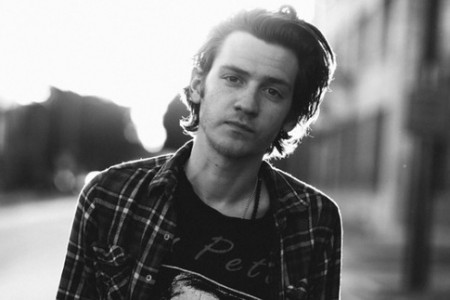The Teeter-Totter Between Recording History, and Making History into Art
It was the industrial revolution that first attempted to record sound “as a medium for preservation,” activating the phenomena of noise as an integral source when documenting history. Thomas Edison received notoriety for the phonograph in 1877, but it was really Edouard-Lèon Scott de Martinsville who invented the phonautograph in 1857, the first recording device. The device was specifically created to study frequency found in sounds, an intention much different from the phonograph invented by Edison which was to play and “reproduce the recorded sound… originally recorded onto a tinfoil”. As per historical reference ( author unknown ), “The phonograph revolutionized the art of music. Performances were recorded and people could listen to them at their leisure. It also made music and communication more public. The invention signaled the birth of a new form of entertainment and an entirely new field of business that fed the demand for the new invention, the music industry”- hence both inventions put an end to the masses’ naiveté to the sense of hearing, and introduced the start of audio’s sensational future possibilities.
When we fast forward through the history of music and sound, we could say that the underground rave music scene (which famously erupted somewhere in between Chicago and the UK during the late 80’s), had a lot of thanking to give the founding fathers of sound, more so Edison’s phonograph. It was the phonograph that gathered groups of people before a speaker, and provided the tinfoil turn-table surface that would later provide all DJ’s their toy to scratch and play. Meanwhile visual artists and sound composers like Christian Marclay (Guitar Drag, 2000), push the limits of the process by recording the unplanned ( similar to Martinsville’s sterile approach to document sound), as a way to preserve a moment in history, as a form of art.
Although the fundamental of each invention resided in sound, both were distinct in nature and require different modes to the final release of sound. For one, in the rave scene, the DJ uses the turntables to create sounds, which eventually become into hypnotic, riveting, 8 count dance-able sentences, or compositions, while artists like Marclay play with sound from an archival and fortuitous place: lacking the 8 count structure, not-worthy of Martinsville experimental approach to document sound.
In 2012, Emile Milgrim and Thom Wheeler Castillo, two artists residing in Florida embarked on a project that would lead to the sound collective, Archival Feedback. Their work falls somewhere in between Martinsville and Edison’s inventions, and/or intentions. During a recent group exhibition at FATVillage Projects, I curated In Close Proximity, and asked AF to present Delimiting Site 1b, (2016-ongoing). The work was an examination of a location and its history ( a strong tie to the theme of the exhibition: a person’s identity and possible evidence embedded in a terrain that could solidify the security of people in political emancipation). The piece entailed of a gouged 10 ft x 10 ft rectangle shape on a plot of land the artists had worked on for about 3-4 hours. Hot pink wooden stakes were placed at each corner to mark its view to the visitors and microphones were placed next to the piece to record the sounds of the clanging shovels.

Questions & Answers:
When did you first dabble in sound?
AF: In the womb, duh.
BB: Oh..yeah, presumably so. I knew that.
Was your exploration intended as a work of art or as sound play for the public?
AF: EXPLORATION
How is sound relevant in Contemporary art?
AF: Sound media has improved as the tech has developed and now is very streamlined, allowing access to various platforms that can easily transmit to global audiences in seconds for playback and feedback. Sound is immediate, physical sensation, directly transmitting rich, physical details of the material world that flow through our bodies, primarily, but not exclusively, through our ears.
Waves physically moves through the eardrum and perceived by the brain simultaneously, directly employing language, records, noise, movement. I find it equally if not more intriguing than the visual. That directness as a medium also enhances the ideas driving the work, the gesture of listening, enhanced listening of the landscape by using the brain and the body to listen to the world around. Is this relevant in Contemporary art? I would hope that spaces that actively employ art are places that encourage listening as much as rhetoric.
What are you saying… or trying to say to the audience in Delimiting Site 1b? What will the audience understand when they listen to your work?
AF: In Delimiting Site 1b, a sound replays with fidelity a gesture enacted in fieldwork, the sound of a shovel digging. To delimit is to measure and form boundaries, to create my space, your space. But the audience is presented with a record of breaking down a site. The fieldwork explores the site, breaks it down, handles it. It uncovers details of the site. What is the site made of, what has been forgotten? What seems inconsequential reveals something about place and the experience of that place over time, that is, its history. When we dig through layers of bio-facts, handling of the stratum as information that is measured, mediated through technology, that sifting from bio-facts into artifact, the gathered stratum becomes a record. History can happen in the same place over and over again but is usually forgotten. In the act of the digging, through the stratum, we can reclaim that history, we can confront what it reveals. The recorded gesture becomes a way to experience that record through its playback, looping, re-framing that act of.

AF: This work is not for sale.
BB: So I can’t buy it? Okay then… If you could turn your sound into an image, what would that image look like?
AF: It’d be interesting to portray through a moving image, an animation made from drawings that describe the sound and gesture.
Are you conversing with each other (AF) when you create, or with the public?
AF: We see the work as a constant dialogue between ourselves and the environment. We’re glad others choose to listen.
What are you working on aside from In Close Proximity?
AF: We’re scoring a soundtrack to a film about the Everglades.
– Beláxis Buil
For more on Archival Feedback, visit: Other-electricities.bandcamp.com
Sources:
*DJtechtools.com, History of the Rave Scene: How Djs Built Modern Dance Music, Sara Simms, December, 2013
*ihatetodance.com, Hear the beat, feel the…, James Joseph, 2014, Internet
*glasstire.com, Notes on Christian Marclay’s “ Guitar Drag”, Christina Rees, June, 2015, Internet
*www.reference.com, How did the Phonograph change society?
*therivardreport.com, ‘ Guitar Drag’ Reverberates Dark History at ArtPace, Wendy Weil Atwell, May, 2015
*wikipedia.com, Rave, Page issues
*wikipedia.com, History of Sound recording, Page issues


